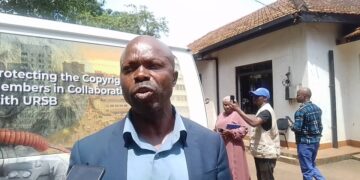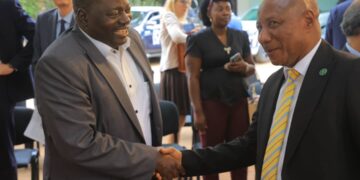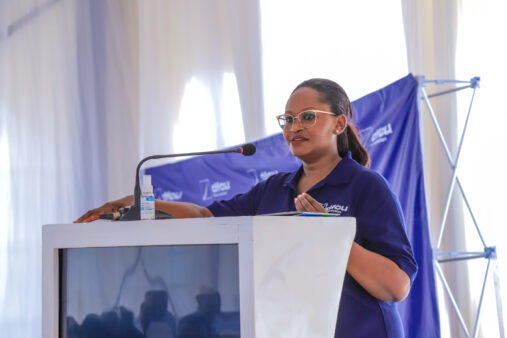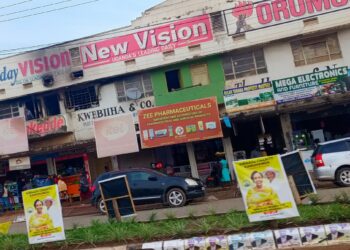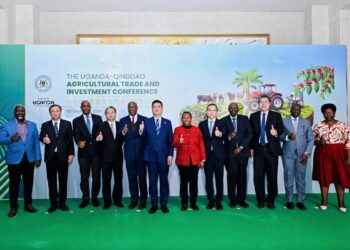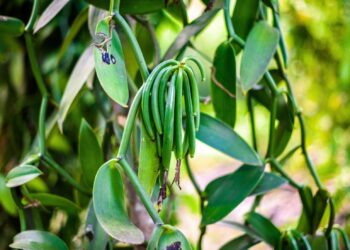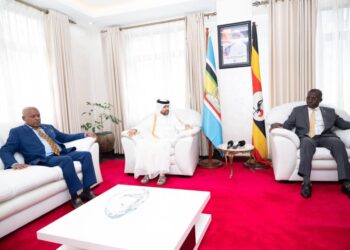NATIONAL
On June 12, 2025, Uganda’s Finance Minister, Hon. Matia Kasaija, unveiled a UGX 72.3 trillion budget for FY 2025/26, projecting a robust 7% economic growth despite global uncertainties.
With agriculture anchoring 70% of Uganda’s workforce and 24% of GDP, the budget allocates over UGX 1.6 trillion directly to programs like the Parish Development Model (PDM), Agricultural Credit Facility (ACF), and agro-industrialisation, alongside UGX 2.43 trillion in wealth creation initiatives.
However, as the government drives commercial agriculture, persistent challenges, high interest rates (17.7%), low private sector credit growth (6.4%), and rural-centric focus, underscore that state interventions alone cannot fully transform the sector.
The launch of the dfcu Foundation on May 29, 2025, in Mbarara, a private sector-led initiative evolving from dfcu Bank’s Agribusiness Development Centre (ADC), emerges as a critical partner to amplify government efforts, fostering inclusive, sustainable agricultural growth.
The dfcu Foundation’s rebranding signals a bold pivot towards empowering 100,000 farmers, SMEs, women, and youth over five years, with target of 60% women and 40% youth, aligning with Uganda’s youthful demographic (77–78% under 30).
Building on ADC’s legacy of supporting 59,000 beneficiaries and facilitating USD 22 million in business linkages since 2018, the Foundation expands its mandate to include financial literacy, mentorship, credit access, and market linkages; this holistic approach complements the government’s Vision 2040 and PDM, which aim to transition subsistence farmers into commercial enterprises.
The government’s PDM, with UGX 1.059 trillion, delivers UGX 100 million per parish to 10,589 parishes, reaching 2.63 million beneficiaries by June 2025, with 45% investing in crops like maize and 36% in livestock.
The Parish Development Model Information System (PDMIS), designed to digitise support for rural households and address the challenges of subsistence farming and rural poverty, issues more prevalent in rural than urban communities, prioritises these areas, though its urban reach remains limited. The Agriculture Credit Facility (ACF), has leveraged over UGX 1 trillion in loans for 14,336 farmers, with allocations supporting grain trading (43%) and on-farm activities (32%).
Agro-industrialisation, with UGX 308.9 billion for industrial parks and UGX 187 billion for Uganda Development Corporation, has created 181,403 jobs across 628 companies, promoting value-added products like dairy and processed foods.
These efforts align with a 26% export growth to USD 9.3 billion, driven by coffee (USD 2 billion) and 31 new products, supported by a USD 10/metric ton levy on bran to encourage local value addition.
Despite all these efforts, credit barriers persist: high interest rates and sluggish credit growth limit SME scalability, while the Parish Development Model’s rural focus highlights the need for similar interventions in urban centers, a gap the private sector can help address.
As a private sector player, the dfcu Foundation’s interventions are well positioned to fill critical gaps: for instance the Foundation’s SOMA eLearning Platform equips farmers with climate-smart practices, addressing environmental threats like soil degradation noted by Agriculture Minister Bright Rwamirama during the launch.
By leveraging dfcu’s branch network, the Foundation facilitates tailored credit solutions, SME training, mentorship, and market access, directly tackling the budget’s credit access challenge. Through enterprise development interventions, the Foundation prepares SMEs for commercial credit and investment opportunities.
The participation of women reaching 52% under the ADC over the last six years underscores a deliberate and sustained effort toward gender equity, mirroring the budget’s UGX 231.3 billion GROW program for women enterprises.
The synergy is clear: the government’s macro-investments in irrigation to achieve 54.76 million cubic meters capacity with 7 large schemes, mechanisation, and research—including NARO’s 20 million anti-tick vaccine doses lay the infrastructure, while the Parish Development Model and dfcu Foundation’s grassroots initiatives ensure equitable implementation.
For instance, PDM’s digital tools align with SOMA’s training, enhancing farmer productivity.
The Foundation’s partnerships with cooperatives and SMEs amplify ACF’s loan impact, ensuring smallholders benefit from agro-industrial parks’ value chains.
This private-public partnership offers a blueprint for thought leaders.
The government cannot transform agriculture alone; private sector players like dfcu Foundation bridge systemic gaps, ensuring credit flows, skills transfer, and market access reach the underserved.
To maximise impact, dfcu will continue to scale beyond Mbarara in its five regional hubs, while the government addresses urban neglect and lowers interest rates.
As Uganda aims for a USD 500 billion economy by 2040, this collaboration—rooted in inclusivity, innovation, and sustainability—could redefine Africa’s agricultural narrative, proving that shared ambition can yield transformative prosperity.















